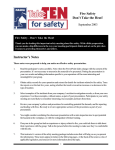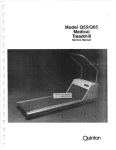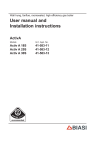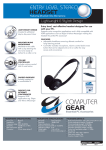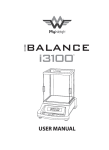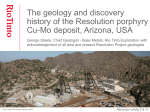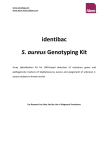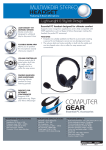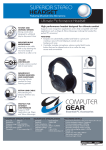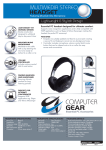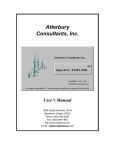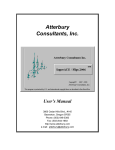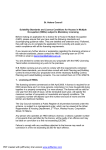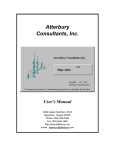Download Fire Safety Participant Manual
Transcript
Fire Safety Don’t Take the Heat! September 2003 Participant’s Notes: Fire Safety- Don’t Take the Heat! Descriptor: Unpredictable and potentially destructive, fire deserves respect. Preventing fires is the first line of defence for keeping your workplace safe. MASHA member companies participating in this short program will come away with an awareness of the work place hazards associated with fire and what preventative measures you can take to lower the risk of fire in the workplace. Each year there are more than 1,500 industrial fires in Canada, many of which could have been prevented. Fire Safety slide #1 – Fire Safety What We’ll Cover slide #2 • • • • • • • • Are you ready for the fire challenge? Fire classifications Using the right extinguisher Major causes of industrial fires Controlling fire hazards Handling flammable liquids PASS that extinguisher, please Fire prevention Industrial fires can cause death, permanent disfigurement due to burns, respiratory problems, property damage and loss of work. In an underground mines, the risk increases because of the potential distance to an escape route, and the effects on ventilation. The two key measures you can take to prevent fire in the workplace are being able to identify different types of fire hazards and knowing how to control them. If a fire has started, early detection will allow enough time for safe evacuation. Every employee should be familiar with the company fire plan, know where all the fire exits are and should practice what to do in the event of a fire. By the end of today’s session, you will have a better idea of how different types of fires start and the best way to control them. We’ll also talk about fire and extinguisher classifications, and the correct use of an extinguisher. Fire prevention is your best defense against workplace fires, and we’ll cover different things you should look for that could indicate a hazard. But first, some basic questions about fire safety and safety practices. – Fire Safety 1 Are you ready for the fire challenge? Do you know: slide #3 • • • • • • • • • the difference between Class A, B, C and D fires? what type of extinguisher to use on an electrical fire? if your work extinguishers are checked regularly? if your work fire exits or ceiling sprinklers are obstructed? if grounding wires are attached to your storage drums? If flammable liquid containers are kept in a fire-resistant storage cabinet? if your company uses bonding wire or an anti-static hose when pouring flammable liquids from drums into smaller containers? how often all electrical and mechanical equipment is checked? the details of your company fire plan? – Fire Safety What is Fire? slide #4 Fire Tetrahedron – Fire Safety Fire Classifications A slide #5 •Ordinary combustibles (wood, paper, cloth, rubber, plastics, etc.) •Symbol is a green or metallic triangle B •Flammable liquids •Symbol is a red or metallic square C •Live electrical current is present •Symbol is a blue or metallic circle D •Certain combustible metals (aluminium, magnesium, sodium, etc.) •Symbol is a yellow or metallic star K •Commercial kitchen fires such as burning oils and grease •Symbol is a purple stop-sign shape. Recently, new picture symbols have been developed for identifying fire classifications. Make yourself familiar with both styles – Fire Safety Did you know that there are four classes of fires? Do you know what the differences are? Which one is an electrical fire, and what type of an extinguisher would you use on it? Think about your workplace - are the fire extinguishers checked on a regular basis? Do you know where the fire exits are? Are these exits blocked? Is the sprinkler system functioning? Are the sprinklers blocked? Are you familiar with the safe way of storing flammable liquids? What precautionary measures should you take when pouring flammable liquids from a drum into smaller containers? Is the electrical and mechanical equipment in your workplace checked on a regular basis? And, do you know what your company fire plan is, or at least, where you can get the information? Fire requires four things – heat, oxygen, fuel and a chemical reaction. Without all these elements, a fire cannot start. Some substances contain enough oxygen within them to sustain burning and that’s why trying to smother a fire doesn’t always work. The source of heat could be from a spark or arc, from friction, chemical or electrical heat, lightening, or even the sun. But if a fire is going to burn, heat, fuel and oxygen must be there in the right amounts and under the right conditions – the chemical chain reaction of combustion is the fourth ingredient. When you heat a fuel to its ignition temperature, oxygen keeps the fire alive. As the fuel burns and gives off gases, these gases may also ignite, spreading the fire. The burning process generates heat in the form of flame, which keeps the fuel at its ignition temperature. There are four types of fire classifications that are commonly used: A - The symbol is a green or metallic triangle, identifying that the fuels in this category are ordinary combustibles. This includes wood, paper, cloth, rubber, plastics, etc. B - A red or metallic square is used to identify flammable liquids. This includes gasoline, paint, solvents, etc. C - Live electrical current is classified with a blue or metallic circle. D - A yellow or metallic star indicates a combustible metal such as aluminum, magnesium, sodium, etc. K – Commercial kitchen fires such as burning oils and grease, are identified with a purple stop-sign shape. Recently, new picture symbols have been developed for identifying fire classifications. Make yourself familiar with both styles, since either or both may be used. 2 Using the right extinguisher for the job Type slide #6 What’s Burning Contents of Extinguisher A Wood, paper, Water - type, foam, halon, multirags, rubber, etc. purpose dry chemical B Flammable liquids, Carbon dioxide, dry chemical, foam, multi-purpose dry gases, grease chemical, water fog, halon C Live electrical current D Burning metals K Vegetable or animal oils Multi-purpose dry chemical, dry chemical, carbon dioxide, halon Special dry chemical (i.e. sodium chloride base) Potassium Acetate Solution, will foam up to crate a barrier between the oil and O2. – Fire Safety Use a Class A extinguisher on ordinary combustibles such as wood, paper or cloth. The extinguisher is either a water-type containing water and compressed gas or a multi-purpose type, containing foam, halon or a multi-purpose dry chemical. A Class B extinguisher should be used on flammable liquids, such as gasoline, grease or oil. These extinguishers contain dry chemicals, foam, halon or a multi-purpose dry chemical. Class C extinguishers are for electrical fires and they contain nonconductive dry chemicals, foam, halon or multi-purpose dry chemical extinguishing agents. Class D extinguishers are designed for flammable metals such as aluminum, magnesium or sodium and are often specific to one type of metal. A Class D extinguisher is not intended for multi-purpose use. Class K extinguishers are intended to put out grease and oil fires. They’re required in commercial kitchens, and contain a wet alkaline mixture like potassium acetate. This class of extinguishers was added recently because dry chemical extinguishers don’t do a good job on these types of fires. Many new extinguishers have a multi-class or multi-purpose rating, and can be used on several types of fires. For example, they could be labeled AB, BC, or ABC. They could be labeled with the old shape and colour style of symbol or the new picture style. Major Industrial Fire Causes slide #7 • Electrical or mechanical failure • Improper handling of flammable liquids • Sparks from cutting / welding • Poor housekeeping • Careless smoking • Arson The six main causes of industrial fires are electrical or mechanical failure, the improper handling of flammable liquids, sparks from cutting or welding activities, poor housekeeping, careless smoking and arson. Every employee should be able to recognize fire hazards and know what control measures they should take to prevent them. – Fire Safety Controlling Hazards – Flammable Liquids slide #8 • Remove any sources of ignition • Provide continuous ventilation • Use proper handling procedures • Install drum and storage cabinets • Post warning signs Prone to exploding when they reach ignition temperature, flammable liquids are a very real workplace hazard. To control flammable liquid hazards, be on the lookout for, and remove, any potential sources of ignition. Make sure that flammable liquids are handled and stored the correct way and that there is continuous ventilation in the area. It’s also a good idea to post warning signs about the dangers in the area. – Fire Safety 3 Controlling Hazards – Mechanical • Conduct regular maintenance inspections • Perform pre-op checks • Provide ABC extinguishers • Install fire suppression / sprinkler systems slide #9 Be on the lookout for any mechanical hazards as well. Conduct regular maintenance inspections on equipment, and make sure equipment is checked before usage. Have multi-purpose extinguishers (ABC) available and be sure that fire suppression and sprinkler systems have been installed. – Fire Safety Controlling Hazards – Electrical slide #10 • Conduct regular maintenance • Perform pre-op checks • Check outlets, cords, sockets circuits, etc. • Do not overload circuits • Install ground fault circuit interrupters • Check recommended power ratings for correct amperage • Provide ABC extinguishers Keep your workplace safe from electrical hazards by conducting regular maintenance checks on electrical equipment and check all equipment before using it. This includes checking outlets, cords, sockets, circuits, etc. Always use the correct amperage, don’t overload circuits and be sure that ground fault circuit interrupters have been installed as an added precaution. And make sure multi-purpose extinguishers (ABC) are available. – Fire Safety Controlling Hazards – Poor Housekeeping • Clean up spills immediately • Properly dispose of waste • Keep flammables away from ignition sources • Keep work area free of unnecessary flammables • Maintain clean surfaces • Don’t obstruct sprinklers slide #11 Messy and dirty work areas are a real fire hazard. To minimize the housekeeping hazard risks, make sure that any spills are cleaned up and dispose of waste in the recommended way. Always keep flammables away from an ignition source, and stored in the proper containers. Keep your work area free of unnecessary flammables. Make sure you know where the fire extinguishers are located and be sure not to obstruct the sprinklers in your area. – Fire Safety Controlling Hazards – “Hot Work” slide #12 • Obtain proper “hot work” permits • Provide ABC extinguishers • Wet down areas before working • Perform pre-op checks • Keep immediate area free of flammables • Use fire guards • Check work area afterwards • Properly store / secure gas cylinders Hot Work involves the use of gas cylinders, as in welding, soldering and torch cutting. For maximum safety, always have a multi-purpose (ABC) extinguisher on hand and wet down the area before you begin working. Check your equipment before you start and keep the area free of flammable materials. Use your fire guards while working and thoroughly check your work area afterwards. Make sure cutting or burning equipment is properly stored and maintained. – Fire Safety 4 Controlling Hazards – Careless Smoking • Obey all smoking regulations Lit matches and cigarettes are a potential heat source you don’t want to risk in the workplace. That’s why you should obey all smoking regulations. slide #13 • Make sure it’s really out – Fire Safety Handling Flammable Liquids slide #14 • Flammable liquids should be stored in approved safety containers with vapor-tight, self-closing covers • Minimize the build-up of static electricity by bonding and grounding metal containers • Use a ground wire from the drum to an earth ground for as long as a drum is in use • Attach a bonding wire from the container to the drum before filling the container – Fire Safety Flammable Liquids Safe Set-Up slide #15 Flammable liquids can explode or burn, causing the rapid spread of fire throughout the workplace. Temperatures can exceed 1000 degrees Fahrenheit and fire danger can be secondary to the smoke filled with poisonous gases that are given off in the combustion process. Because of the lethal potential of flammable liquids, they should always be stored in approved safety containers with vapor-tight, selfclosing covers. To minimize the build-up of static electricity, bond and ground metal containers and use a ground wire from the drum to an earth ground for as long as a container is in use. Always attach a bonding wire from the container to the drum before filling the container. Proper set-up of drum, container, ground and bonding wire One gallon of gasoline exploding has the same energy as 81 lbs. of dynamite – Fire Safety 5 PASS that extinguisher, please! slide #16 Pull the pin at the top of the extinguisher Aim the nozzle towards the base of the fire Squeeze the handle Sweep the nozzle back and forth – Fire Safety Fire Workout slide #17 • Respect how serious fire can be • Learn to recognize and control all types of fire hazards at your facility • Review your company fire plan • Practice safe work habits • Dispose of oily rags and other flammable waste in fire-proof containers • Prevent fires – don’t fight them Even though extinguishers come in different shapes and sizes, they all operate in the same way. If you ever have to use an extinguisher, try to remember the ‘PASS’rules: P - Pull the pin at the top of the extinguisher that protects the handle from being pressed accidentally. A - Aim the nozzle towards the base of the fire. S - Squeeze the handle to discharge the extinguisher, preferably from a distance of about eight feet. When you release the handle, the discharge will stop. S - Sweep the nozzle back and forth at the base of the fire. Be sure that the fire doesn’t re-ignite. We’ve covered a lot of material and you should have an idea of how serious fire hazards can be. Review and be familiar with your workplace fire plan. Learn to recognize and control the different types of fire hazards at your workplace and always practice safe work habits. Dispose of oily rags and other flammable waste in fire-proof containers and practice good housekeeping. And remember, it’s easier to prevent a fire than to fight one. – Fire Safety Legislation for Fire Safety Occupational Health and Safety Act Section 52. Notice of accident, explosion or fire causing injury 52. (1) If a person is disabled from performing his or her usual work or requires medical attention because of an accident, explosion or fire at a workplace, but no person dies or is critically injured because of that occurrence, the employer shall, within four days of the occurrence, give written notice of the occurrence containing the prescribed information and particulars to the following: 1. The committee, the health and safety representative and the trade union, if any. 2. The Director, if an inspector requires notification of the Director. Section 53. Accidents, explosions, etc., at a project site or mine 53. Where a notice or report is not required under section 51 or 52 and an accident, premature or unexpected explosion, fire, flood or inrush of water, failure of any equipment, machine, device, 6 article or thing, cave-in, subsidence, rock burst, or other incident as prescribed occurs at a project site, mine or mining plant, notice in writing of the occurrence shall be given to a Director and to the committee, health and safety representative and trade union, if any, by the constructor of the project or the owner of the mine or mining plant within two days of the occurrence containing such information and particulars as may be prescribed. Excerpts concerning fire from Regulation 854, Mines and Mining Plants Section (1) Definitions “fire-extinguishing equipment” means a fire hose, an extinguisher or other similar equipment used to fight a fire; “fire hazard area” means, (a) an area where a fire hazard may be created by smoking, matches or other means of producing heat or fire and which has been designated as such by the supervisor in charge of the mine, or (b) a storage area where oil, grease or flammable liquids are stored in excess of 500 litres; “fireresistance rating” means the rating in hours or fraction thereof that a material or assembly of materials will withstand the passage of flame and the transmission of heat when exposed to fire, as established for the material or assembly of materials under the Building Code Act; “fire suppression system” means an installation for the specific purpose of controlling a fire in a particular place; Section 22 2) For the purposes of section 52 of the Act, notice of, (a) an accident, explosion or fire which disables a worker from performing his or her usual work [shall include] (c) the name, address and type of business of the employer; (d) the nature and the circumstances of the occurrence and the bodily injury or illness sustained; (e) a description of the machinery or equipment involved; (f) the time and place of the occurrence; (g) the name and address of the person suffering the injury or illness; (h) the names and addresses of all witnesses to the occurrence; (i) the name and address of the physician or surgeon, if any, by whom the person was or is being attended for the injury or illness; and (j) the steps taken to prevent a recurrence. (3) A record of an accident, explosion or fire causing injury requiring medical attention but not disabling a worker from performing his usual work shall be kept in the permanent records of the employer and include particulars of, (a) the nature and the circumstances of the occurrence and the injury sustained; (b) the time and place of the occurrence; and (c) the name and address of the injured person. Part II. Fire Protection Section 25. 25. (1) Procedures in case of a fire in an underground mine, or in a structure or building on the surface at an underground mine, that may be a hazard to workers in the mine shall be prepared by the supervisor in charge of the mine. (2) An alarm system, that is effective to warn workers in an underground mine of a fire that is likely to endanger their safety, shall be provided. (3) The procedures required by subsection (1), or extracts therefrom, and a notice explaining the alarm system shall be set out in writing and shall be posted and kept posted in the shaft house and in a conspicuous place or places where they are most likely to come to the attention of a worker. 7 (4) Every worker shall be advised by a supervisor of the procedures and the alarm system. (5) Once in at least every twelve months during each production shift a fire alarm test of the procedures shall be conducted. (6) The alarm system in an underground mine shall, (a) consist of the introduction into all workplaces of sufficient quantities of ethyl mercaptan gas or similar gas to be readily detectable by all workers; and (b) be kept ready for immediate use. (7) Despite clause (6)(a), an alternative means of alarm may be used if the alarm system is agreed upon by the employer and the joint health and safety committee or the health and safety representative, if any, for the workplace. (8) A report of each fire alarm test of the procedures mentioned in subsection (5) shall be kept available at the mine for three years. [O. Reg. 779/94, s. 2; 272/97, s. 9] Section 26. 26. Where the procedure in case of fire in an underground mine provides for the use of a refuge station for workers, the refuge station shall, (a) be constructed with materials having at least a one hour fire- resistance rating; (b) be of sufficient size to accommodate the workers to be assembled therein; (c) be capable of being sealed to prevent the entry of gases; (d) have a means of voice communication with the surface; and (e) be equipped with a means for the supply of, (i) compressed air, and (ii) potable water. Section 28 28. (1) Fire extinguishing equipment of suitable type and size for use on a fire shall be provided, (a) at a fire hazard area; (b) where an electrical installation or equipment may be a fire hazard; (c) in or about a headframe; (d) in a building or structure on surface where a fire might endanger the mine entrance; and (e) at a shaft station in an underground mine. (2) A fire suppression system consisting of sprinklers, foam or other suitable means of suppressing fire shall be provided, (a) in an underground mine, (i) on equipment containing more than 100 litres of flammable hydraulic fluids, (ii) in every storage area where more than 500 litres of oil, grease or flammable liquids are stored, (iii) in every service garage; and (iv) in every permanent fuelling station; and (b) on the surface, in a building or structure, except a fan house, located above or adjacent to an opening to an underground mine. (3) At least once each month in an underground mine, (a) fire extinguishing equipment; (b) fire suppression systems; (c) fire hydrants; and (d) fire doors, shall be inspected by a competent person who shall report in writing thereon to the supervisor in charge of the underground mine. [O. Reg. 486/99, s. 1] 8 Section 29. 29. (1) In an underground mine or in or about a headframe or shaft house, flammable refuse shall be, (a) deposited in covered, fire-resistive containers; and (b) removed at least once a week from the mine or headframe or shaft house. (2) Scrap timber shall safely be disposed of or removed from an underground mine. (3) A written report certifying that there is no accumulation of flammable refuse in the area under his supervision shall be made weekly by a supervisor tothe supervisor in charge of the mine. Section 30. 30. (1) Oil, grease and other flammable material shall not be kept or stored in a shafthouse or in a portal house. (2) Oil, grease and flammable liquids with a flashpoint below 52° Celsius shall, (a) when being used underground, be transported and stored only in metal containers or receptacles or in portable plastic containers for Petroleum Fuels as specified in CSA Standard No. B376-M1980, “Portable Containers for Gasoline and Other Petroleum Fuels”; and (b) when stored underground, be restricted in quantity to the requirement for, (i) the current day’s work in the case of volatile flammable liquids, and (ii) seven days in the case of oil and grease. (3) No device for the generation of acetylene gas shall be used in an underground mine. (4) No internal combustion engine that uses gasoline, propane or other volatile substance as a fuel shall be used in an underground mine. (5) Except when used for burning or cutting, propane or other similar fuel that is heavier than air when in a gaseous state shall not be permitted to be or be kept underground. (6) When propane or other similar fuel that is heavier than air is being used underground for burning or cutting, the containers for the fuel shall be of a type certified under the Energy Act and shall not be larger than five kilograms in capacity. [O. Reg. 584/91, s. 2] Section 31. 31. No worker shall build or set a fire in an underground mine unless he is specifically authorized to do so and has immediately available suitable fire extinguishing equipment. Section 32. 32. Every workshop and lunchroom in an underground mine shall, (b) be located and maintained so as to reduce the fire hazard to a minimum. Section 33. 33. A structure housing a fan used in connection with a ventilation system for an underground mine shall be constructed of non-combustible material. Section 34. 34. (1) A fire hazard area shall be identified by suitable warning signs. (2) Except where special precautions are taken and written instructions issued, no use of matches, smoking or other means of producing heat or fire shall be permitted in a fire hazard area. Section 35. 35. (1) If a flow of flammable gas is encountered in a mine or in an enclosed building housing a diamond drill on the surface and the concentration of the flammable gas is unknown, (a) all sources of ignition in the affected area shall be eliminated; (b) all electrical equipment in the affected area shall be de- energized; 9 (c) the affected area shall be evacuated; (d) precautions shall be taken to prevent persons from entering the affected area inadvertently; (e) a supervisor shall be notified; (f) the affected area shall be tested by a competent person; and (g) the affected area shall be designated as a fire hazard area. (2) Subject to subsections (3), (4) and (5), work may resume if the concentration of flammable gas is below 1.0 per cent. (3) If the concentration is less than 0.25 per cent and the affected area is tested periodically to ensure that the level of concentration is known, no precautions are required. (4) If the concentration is 0.25 per cent or greater but not more than 0.5 percent, all of the following precautions shall be taken: 1. The supervisor shall provide written instructions of any special precautions. 2. The instructions, if any, shall be communicated to the workers. 3. The affected area shall be designated as a fire hazard area. 4. The affected area shall be tested at least once per shift before work begins and, again, on release of any further flow of gas. 5. A flammable gas detector shall remain in the affected area for the purpose of continued testing. (5) If the concentration is 0.5 per cent or greater but not more than 1.0 per cent, all of the precautions set out in subsection (4) shall be taken and the electrical equipment, diesel engines, tools and other material used in the workplace shall be designed to function safely in a flammable gas atmosphere. (6) If concentrations of flammable gas exceed 1.0 per cent in an area, all of the following precautions shall be taken: 1. All sources of ignition in the affected area shall be eliminated. 2. All electrical equipment in the affected area shall be de-energized. 3. All persons, other than competent persons necessary to measure the concentration of flammable gas and to make ventilation changes, shall be removed from the affected area. (7) In mines where flammable gas is known to occur, workers who are underground or diamond drillers who are on the surface shall be advised of, (a) the probability of encountering a flow of the gas; and (b) the measures and procedures prescribed in this section. (8) For the purposes of this section, the concentration of flammable gas means the percentage, by volume, of flammable gas in the general atmosphere. [O. Reg. 236/99, s. 3] Section 36. 36. (1) Where a blow torch or welding, cutting or other hot work equipment is used underground, or in a headframe, shaft house or other surface building in which a fire may endanger the mine entrance or the underground workings, a procedure for the safe use of hot work equipment shall be prepared in writing and signed by the supervisor in charge of the mine. (2) Only a worker who is a competent person or is under the direction of acompetent person shall use hot work equipment. (3) In addition to the hot work procedure required by subsection (1), written instructions shall be issued to the worker by a supervisor before the hot work equipment is used respecting, (a) the type of work; (b) the location of the work; (c) when the work is to be done; and (d) any special measures and procedures to be taken before, during and after the work. 10 (4) Where hot work equipment is used in a shaft, timbered area or fire hazard area, (a) the area adjacent to the particular workplace shall be wet down, (i) before the work is begun, and (ii) when the work is stopped and the worker using the hot work equipment intends to leave; (b) the area adjacent to the particular workplace shall be examined for potential fire hazards, (i) before the work is begun, and (ii) when the work is stopped and the worker intends to leave the area, and (iii) on at least one other occasion approximately two hours after the work is stopped; (c) fire-fighting equipment suitable for extinguishing any potential fire shall be available; and (d) workers shall be protected from fumes, vapours or gases by, (i) ventilation, or (ii) the wearing of respirators. (5) Subsection (1) does not apply to hot work being performed in a repair station or garage protected by a fire suppression system. (6) Clause (4) (a) does not apply where the wetting down will create a hazard because of freezing or the presence of electrical equipment. Section 37. 37. (1) Except during the initial stages of exploration and development of mine, in addition to the opening through which workers are let into or out of the mine and the ore extracted, a separate escapement exit shall be provided. (3) A structure covering the escapement exit shall be constructed of material with at least one hour fireresistance rating. Section 38. 38. (1) Subject to subsection (2), unless there is a second means of exit from an underground mine, no building shall be erected within fifteen metres of any closed-in part of a headframe or portal house. (2) A building erected within fifteen metres of any closed-in part of a headframe or portal house shall be constructed of material with at least a one hour fire-resistance rating. (5) Except for the fuel tanks of motor vehicles, no gasoline or liquid fuel shall be stored within thirty metres of the centre of the collar of a shaft or other entrance of a mine. (5.1) Subsections (3), (4) and (5) do not apply with respect to a diesel engine and an attached diesel fuel tank (other than an engine installed on a motor vehicle) if, (a) the engine and tank are enclosed by a structure constructed of material that has a fireresistance rating of at least one hour; (b) the structure separates the enclosed area from the hoist or a shaft or other entrance to a mine; and (c) the enclosed area has a fire suppression system and an automatic fire alarm. (6) The natural drainage shall drain away from the shaft collar or other mine entrance. (7) Where a hoist is located above the mine shaft, the supporting and enclosing structures shall be constructed of material with at least a one hour fire-resistance rating. [O. Reg. 272/97, s. 10] Section 39. 39. Fire doors in an underground mine shall, (a) where practical, be installed to close off the shaft or main entrance to the mine and the mine openings directly associated with it from the other workings; (b) be installed to close off, 11 (i) (ii) service garages, and oil storage areas where a total of more than 500 litres of oil, grease or flammable liquid are stored; (c) have at least one hour fire-resistance rating; and (d) be maintained in proper order and kept clear of all obstructions so as to be readily usable at all times. Section 41. 41. (1) Procedures in case of a fire at, (a) the surface of an underground mine; (b) a surface mine; or (c) a mining plant, shall be prepared by the supervisor in charge of the mine or mining plant. (2) The procedures required by subsection (1) or extracts therefrom shall be set out in writing and shall be posted and kept posted in a conspicuous place or places where they are most likely to come to the attention of a worker. (3) A suitable number of workers at each mine and mining plant shall be trained in the fire-fighting procedures and, (a) the names of such workers shall be posted in a conspicuous place; (b) such workers shall be tested for proficiency at least once a year; and (c) a written report of the results of the tests shall be made and kept on file. (4) Fire extinguishing equipment of a suitable type and size shall be provided at, (a) the surface of every underground mine; (b) every surface mine; and (c) mining plant. (5) At least once each month, the (a) fire extinguishing equipment; (b) fire suppression systems; (c) fire hydrants; and (d) fire doors, at the surface of an underground mine, a surface mine and a mining plant shall be inspected by a competent person who shall report thereon to the supervisor in charge of the mine or mining plant, as the case may be. Section 43. 43. Any dangerous, flammable or explosive material or substance in a solid, liquid or gaseous state, or any combination thereof, other than explosive,that is kept, stored or handled, in a mining plant shall, (a) be kept in a container that is suitable having regard to the nature and state of the material or substance; (b) have labels on the container identifying the material or substance and warning of the hazards involved therewith; (c) be kept apart or insulated from any source of ignition or from temperatures likely to cause combustion; and (d) where the material or substance is not intended for immediate use, be kept, stored or handled, (i) outside any building, (ii) in a building not used for any other purpose, or (iii) in a well ventilated compartment with at least a one hour fire-resistance rating which is located in conformity with clause (c). 12 Section 44 44. (1) In addition to the main exit, a building at a mining plant, except a magazine, shall be provided with a second means of exit, convenient to and having easy communication with all rooms regularly occupied by a worker, including, (a) tower stairs equipped with doors and hardware with at least a one hour fire-resistance rating at each storey including the basement; or (b) metal or other non-combustible fire escapes consisting of exterior stairways with railings and with landings at each storey connecting directly with the interior of the building through metal or other doors with at least a one hour fire- resistance rating. (2) No means of exit from a plant building shall be obstructed and no door to a fire escape, tower stair or other smoke-proof enclosure shall be prevented from closing or remaining closed. Section 45. 45. A process that is likely to produce a gas, vapour, dust or fume to such an extent as to be capable of forming a flammable mixture with air shall be carried out in an area which, (a) is isolated from other operations; (b) has a system of ventilation which removes the gas, vapour, dust or fume; (c) has no potential sources of ignition; and (d) has vents, baffles, chokes, dampers or other means to reduce the effects of any explosion, as may be required. Section 105. 105. (1) When in use, a motor vehicle, other than a motor vehicle running on rails, shall, (l) be equipped with a type BC fire extinguisher. Section 120. 120. (1) A service garage or fuelling station in an underground mine shall, (b) be located so that in the event of a fire or explosion in the garage or station there will be a minimum effect on working areas of the mine or on underground installations including shafts, magazines, refuge stations, transformer installations and other installations; Section 120. 120. (1) A service garage or fuelling station in an underground mine shall, (b) be located so that in the event of a fire or explosion in the garage or station there will be a minimum effect on working areas of the mine or on underground installations including shafts, magazines, refuge stations, transformer installations and other installations; (8) All fuel handling, transfer, storage and dispensing systems in an underground mine shall be designed according to good engineering standards and subjected to a fire safety hazard review before first use. Section 122. 122. (1) Explosives stored or kept at a mine or mining plant shall be used only for authorized purposes and if not so used, returned to the supplier of the explosives. (2) Smoking shall not be permitted and no fire or naked flame shall be taken, (a) within a magazine; or (b) within eight metres of any explosive. Section 123. 123. (1) Explosives kept or stored on the surface shall be kept or stored in compliance with the Explosives Act (Canada) and the regulations under that Act. 13 (2) If a magazine is required, it shall be, (a) constructed in conformity with the Magazine Standards for Blasting Explosives and Detonators published by the Explosives Branch of the Department of Natural Resources (Canada); (b) located in conformity with the User Manual, Quantity Distance Tables published by the Explosives Branch of the Department of Natural Resources (Canada); and (c) protected by a fire break. Section 126. 126. (1) A magazine, storage container or explosive storage area referred to in subsection 125(5) that is in an underground mine shall be, (a) located at least 60 metres from, (i) the main access into or from a mine, (ii) key mechanical and electrical installations that remain in service during a mine emergency, (iii) areas of refuge or other areas where workers may congregate, and (iv) storage areas for fuels or other potential sources of fire; Section 131. 131. A motor vehicle when transporting explosives on the surface at a mine or plant shall, (e) be equipped with a type BC fire extinguisher; Section 163. 163. (1) The supports for electrical equipment and the compartments in which it is installed shall be of such material and arranged in such a manner as to reduce the potential for a fire to a minimum. (2) No flammable material shall be stored or placed in the same compartment as electrical equipment. (3) Lamps or heating units shall be installed and protected so as to prevent the heat generated from causing a fire. (4) A fire extinguishing device shall be provided in each area where electrical equipment creates a fire hazard. (5) The fire extinguishing device prescribed in subsection (4) shall be, (a) of a type approved for use on electrical fires; (b) of a size recommended for the size and type of equipment; (c) located convenient to an exit from the area; and (d) maintained in condition for immediate use. Section 194. 194. (1) A person directing workers who perform welding, burning or cutting operations shall be a competent person. (4) A device to extinguish a fire that may be caused by heat or cutting produced during welding, burning or cutting shall be provided with each oxygen-acetylene unit. (5) The device required by subsection (4) shall, (a) have a capacity for extinguishing a fire that is equal to or greater than a minimum Underwriters’ Laboratories of Canada classification of 1A 10B; and (b) be suitable for class A and B fires. (6) Equipment for welding, burning or cutting shall be protected against physical damage and from damage by heat, fire and sparks. 14 Section 196. (5) A conveyor in an underground mine shall have, (b) a fire suppression system at the driven end unless fire retardant belting is used or the conveyor is continually attended by a worker. Section 199. 199. (1) An air compressor driven by a prime mover exceeding twenty- five kilowatts when installed in an underground mine shall be, (a) designed and installed so as to minimize the hazard of fire or explosion due to the accumulation of carbonaceous materials in the air system; Section 232. (3.1) For the purposes of subsection (3), a skip is considered to be being used in an emergency if it is being used to hoist injured people, to evacuate people, to fight fire or to enable people to perform emergency repair work necessary to maintain the mine or the mine dewatering system, electrical system or ventilation system. Section 251. (4) A heating system shall be operated and maintained so as to eliminate the risk of fire or explosion. Section 253. (2) Accurate plans and records of a mechanical ventilation system in an underground mine shall be kept and maintained showing, (e) the location and function of all fire doors Section 281. (2) An employer shall ensure that all workers have access to an eating areawith, (h) a fire retardant receptacle for waste disposal. References For more information on Fire Protection contact your MASHA Representative and/or visit the following web sites: The National Fire Code is available from: http://irc.nrc-cnrc.gc.ca/catalogue/codes.html MASHA recognizes that individual companies must develop health and safety policies and programs which apply to their workplaces and comply with appropriate legislation. The information contained in this reference material is distributed as a guide only to assist in developing those policies and programs. The course material contained in this manual is protected by copyright. The reproduction or transmission of all or any part of this material without the prior written consent of the Mines and Aggregates Safety and Health Association is a violation of national and international copyright laws. For more information please contact: 690 McKeown Avenue, P.O. Box 2050 Stn. Main North Bay, Ontario P1B 9P1 Phone: (705) 474-7233 Fax: (705) 472-5800 email: [email protected] Copyright © 2003, Mines and Aggregates Safety and Health Association 15















